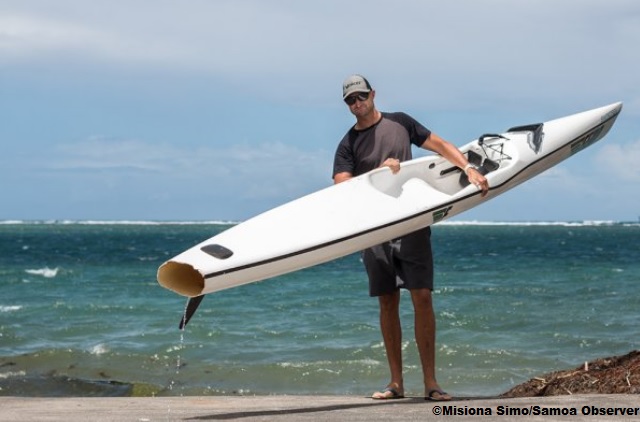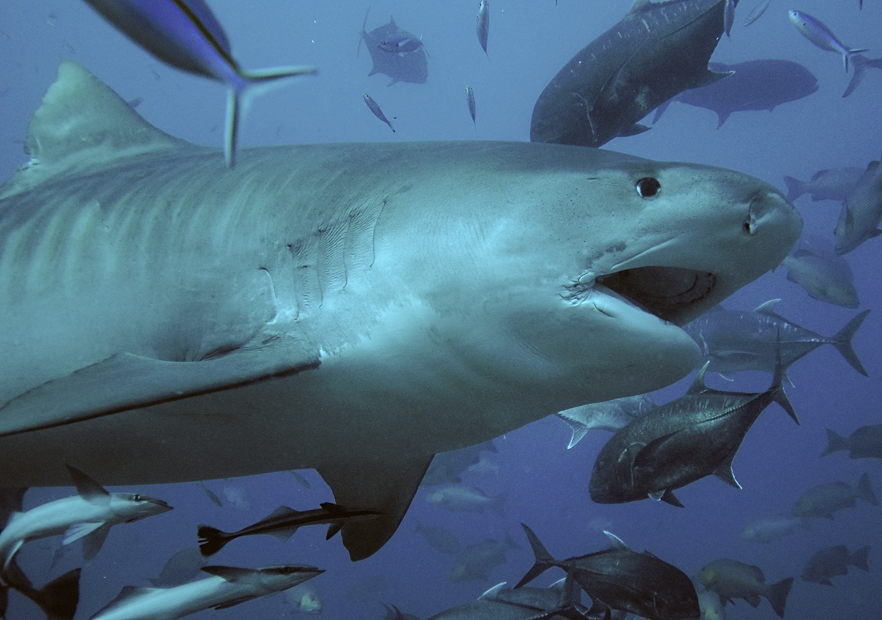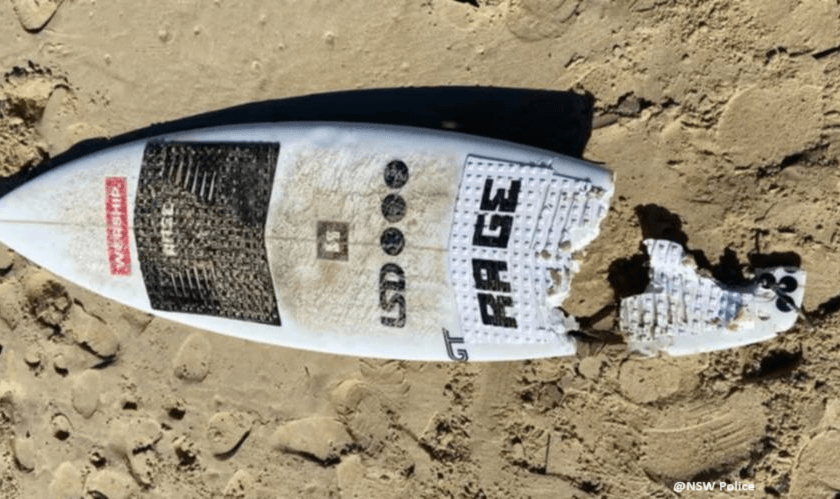Three paddlers separated by more than 2,000 nautical miles had close encounters with large sharks during October.
![]()
Andrew Wheatley was paddling off the coast of Samoa when he lost the rear end of his surfski to a shark.
The Australian was around 1.5 kilometers from the south coast of Upolu when he felt a huge bump and found himself airborne.
“I was going pretty fast when I was lifted from behind, flung up and to the right,” he told the Samoa Observer.
Without focusing on what had just happened, he quickly swam back to his white surfski and began paddling as fast as he could.
“As I was paddling, I turned around and had a look, and realized my whole tail was gone, right up until the running and worked out that whatever it was [that bit the boat], it was quite big.”
“It was just one of those one in a million chances, and you never think it will happen to you.
“I’ve known sharks are out there. I know I’m in their environment but really thought they don’t want anything to do with me.”
Wheatley’s journey back to shore was quite slow in the flooded boat.
To make matters worse, and even though he has been paddling for 20 years, he had failed to carry basic safety gear.
“Normally, I paddle in a lifejacket, take a phone in a pouch and wouldn’t probably go out that far without going with someone,” he said.
“I suppose I went out thinking the wind was good, looked out and just went . . . I’ve been doing this a long time . . . but you just can’t get complacent with this stuff.
“Sometimes you can [become] unconsciously incompetent at what you do because you do it so often, and I think, basically, that’s where I was, not thinking about anything.”
Wheatley made it back to shore and has no qualms about going back to the water. “They [sharks] are not there to attack; they’re not interested in us.
“When they bite it’s because they’re using their sense(s), which is biting because they can’t see,” he said.
He said the boat’s rudder looks “flick like a fish” and thinks the shark was investigating the boat was when it bit.
“He’s probably thinking tuna, or something big, and he got a mouthful of fiberglass instead. He would have spat that out pretty quick.”
Wheatley doesn’t want the event to scare people or make them react negatively to sharks, and supports the Samoa Exclusive Economic Zone, a 128,000 square kilometer area that would become a shark sanctuary.
Off the coast of New Zealand, another shark encounter occurred Oct. 20.
Chase Dorwick and his girlfriend’s dad, Richard Brown, were fishing off the coast at Westshore when a large white shark showed up around 6 a.m.
“I heard a big splash behind me and turned around and there was this nearly 4m long shark,” Chase Dorwick told the NZ Herald.
“It circled us a few times. It was going underneath and around us and I don’t know if it was deliberate, but it did knock my kayak and rocked it a bit,” Brown said.
The roughly 13-foot shark circled with its fin out of the water while checking out the white and yellow kayaks.
Brown struck the shark on its nose with his paddle and the two decided it was time to go.
“We were both a bit scared. I thought if we could get paddling in, either it will follow us or it won’t, and it’s probably our best chance of getting away from it, so we pulled up our anchors and started paddling in,” he said.
The two paddled back into shore and the shark followed for a while, but eventually veered off.
Once they were back on the beach, the were able to film the shark’s fin as it broke the surface of the water.
White sharks have been spotted in the area before and a surfer was bitten by one October 9.
Andrew Brough was at Baylys Beach, Northland NZ, when he was bitten on the right arm by a white shark.



